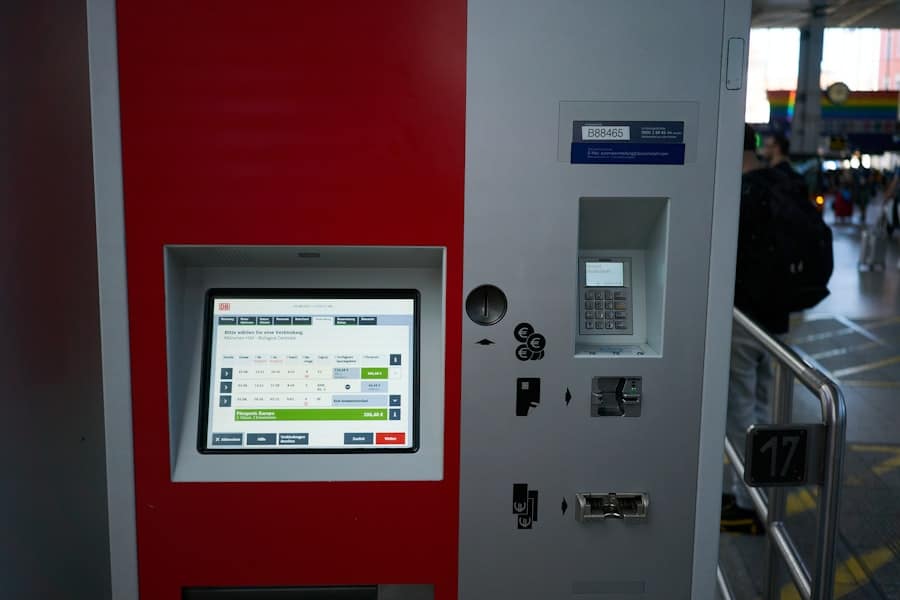Hyperautomation has emerged as a transformative force in the realm of business processes, evolving from the foundational principles of automation to encompass a broader spectrum of technologies and methodologies. This evolution is characterized by the integration of advanced technologies such as artificial intelligence (AI), machine learning (ML), and robotic process automation (RPA) to create a seamless, end-to-end automation experience. Organizations are increasingly recognizing that hyperautomation is not merely about automating individual tasks but rather about reengineering entire workflows to enhance efficiency, reduce costs, and improve service delivery.
The rise of hyperautomation can be attributed to several factors, including the growing complexity of business operations and the need for organizations to remain competitive in a rapidly changing market landscape. As businesses grapple with vast amounts of data and the demand for real-time decision-making, traditional automation methods often fall short. Hyperautomation addresses these challenges by enabling organizations to automate not just repetitive tasks but also complex processes that require cognitive capabilities.
Key Takeaways
- Hyperautomation is on the rise in business processes, combining technologies like AI, RPA, and machine learning to automate and optimize tasks.
- Businesses can benefit from hyperautomation by increasing efficiency, reducing errors, and improving decision-making through data-driven insights.
- Artificial intelligence plays a crucial role in hyperautomation by enabling machines to learn, adapt, and make decisions without human intervention.
- Robotic Process Automation (RPA) is integrated into hyperautomation to automate repetitive tasks, streamline workflows, and improve operational efficiency.
- Hyperautomation has a significant impact on the workforce, transforming job roles, creating new opportunities, and requiring upskilling and reskilling of employees.
The Benefits of Hyperautomation for Businesses
The benefits of hyperautomation extend far beyond mere efficiency gains; they encompass a wide array of strategic advantages that can significantly enhance an organization’s competitive edge. One of the most notable benefits is the substantial reduction in operational costs. By automating repetitive and time-consuming tasks, businesses can allocate their human resources to more strategic initiatives that require creativity and critical thinking.
This not only leads to cost savings but also fosters a more engaged workforce that can focus on higher-value activities. Moreover, hyperautomation enhances accuracy and reduces the likelihood of human error. In industries such as finance, where precision is paramount, automating processes like data entry and reconciliation can lead to significant improvements in compliance and reporting accuracy.
Additionally, hyperautomation facilitates faster response times, enabling organizations to adapt swiftly to market changes or customer demands. For instance, in the retail sector, companies can automate inventory management processes to ensure optimal stock levels, thereby improving customer satisfaction through timely product availability.
The Role of Artificial Intelligence in Hyperautomation

Artificial intelligence plays a pivotal role in the hyperautomation landscape, serving as the backbone for many of its capabilities. AI technologies enable systems to learn from data, make predictions, and even engage in complex decision-making processes that were previously thought to be the exclusive domain of humans. By integrating AI into hyperautomation frameworks, organizations can achieve a level of sophistication that allows for dynamic process optimization and enhanced operational agility.
For example, AI-driven analytics can provide insights into customer behavior, enabling businesses to tailor their offerings and marketing strategies accordingly. In customer service, AI chatbots can handle routine inquiries while learning from interactions to improve their responses over time. This not only enhances customer experience but also frees up human agents to tackle more complex issues that require empathy and nuanced understanding.
The synergy between AI and hyperautomation thus creates a powerful engine for innovation, allowing businesses to stay ahead of the curve in an increasingly competitive environment.
The Integration of Robotic Process Automation (RPA) in Hyperautomation
Robotic process automation serves as a critical component of hyperautomation, providing the tools necessary to automate rule-based tasks across various applications and systems. RPA enables organizations to deploy software robots that can mimic human actions, such as data entry, processing transactions, and managing records. This capability is particularly valuable in environments where legacy systems are prevalent, as RPA can bridge the gap between disparate technologies without requiring extensive modifications.
The integration of RPA within a hyperautomation strategy allows for greater scalability and flexibility in business operations. For instance, a financial institution may utilize RPA to automate its loan processing workflow, significantly reducing the time required to approve applications while maintaining compliance with regulatory standards. Furthermore, RPA can be combined with AI technologies to create intelligent automation solutions that not only execute tasks but also analyze data and make informed decisions based on predefined criteria.
This combination enhances the overall effectiveness of hyperautomation initiatives, driving substantial improvements in productivity and service quality.
The Impact of Hyperautomation on the Workforce
The advent of hyperautomation inevitably raises questions about its impact on the workforce. While there are concerns regarding job displacement due to increased automation, it is essential to recognize that hyperautomation also creates opportunities for workforce transformation. As routine tasks become automated, employees are freed from mundane responsibilities and can focus on more strategic roles that require human insight and creativity.
This shift necessitates a reevaluation of workforce skills and capabilities, emphasizing the importance of reskilling and upskilling initiatives. Organizations that embrace hyperautomation must invest in training programs that equip employees with the skills needed to thrive in an automated environment. For example, workers may need to develop proficiency in managing AI systems or interpreting data analytics to make informed decisions.
Additionally, fostering a culture of continuous learning will be crucial as businesses adapt to evolving technologies. By positioning employees as integral contributors to hyperautomation efforts rather than mere cogs in a machine, organizations can cultivate a more engaged and innovative workforce.
Overcoming Challenges in Implementing Hyperautomation

Despite its numerous advantages, implementing hyperautomation is not without challenges. One significant hurdle is the complexity of integrating various technologies into existing business processes. Organizations often face difficulties in aligning their IT infrastructure with new automation tools, leading to potential disruptions in operations.
To overcome this challenge, businesses must adopt a strategic approach that includes thorough planning and stakeholder engagement throughout the implementation process. Another challenge lies in change management. Employees may resist adopting new technologies due to fears of job loss or discomfort with unfamiliar systems.
To mitigate these concerns, organizations should prioritize transparent communication about the benefits of hyperautomation and involve employees in the transition process. Providing support through training programs and resources can help ease the transition and foster a sense of ownership among staff members. By addressing these challenges proactively, organizations can pave the way for successful hyperautomation initiatives that deliver tangible results.
The Future of Hyperautomation in Business Strategy
As businesses continue to navigate an increasingly digital landscape, the future of hyperautomation appears promising. Organizations are likely to adopt more sophisticated automation strategies that leverage emerging technologies such as quantum computing and advanced AI algorithms. These advancements will enable even greater levels of efficiency and innovation across various sectors.
For instance, industries like healthcare may harness hyperautomation to streamline patient care processes while ensuring compliance with regulatory requirements. Moreover, hyperautomation is expected to play a pivotal role in driving sustainability initiatives within organizations. By automating resource management processes and optimizing supply chains, businesses can reduce waste and minimize their environmental impact.
As consumers become more environmentally conscious, companies that prioritize sustainability through hyperautomation will likely gain a competitive advantage in the marketplace.
Ethical Considerations in Hyperautomation
The rapid advancement of hyperautomation raises important ethical considerations that organizations must address as they implement these technologies. One primary concern revolves around data privacy and security. As businesses increasingly rely on data-driven insights for decision-making, safeguarding sensitive information becomes paramount.
Organizations must establish robust data governance frameworks that ensure compliance with regulations such as GDPR while maintaining transparency with customers regarding how their data is used. Additionally, there are ethical implications related to workforce displacement and job transformation. While hyperautomation can enhance productivity, it also necessitates a careful examination of its impact on employment dynamics.
Companies should strive to create an inclusive environment where employees are supported through reskilling initiatives rather than being left behind by technological advancements. By prioritizing ethical considerations alongside technological innovation, organizations can foster trust among stakeholders while navigating the complexities of hyperautomation responsibly.
In the rapidly evolving landscape of business technology, hyperautomation is emerging as a pivotal force in streamlining operations and enhancing efficiency. As businesses increasingly adopt hyperautomation to automate complex processes, the integration of advanced software solutions becomes crucial. An interesting parallel can be drawn with the furniture design industry, where selecting the right software can significantly impact productivity and creativity. For those interested in exploring the best tools available in this niche, the article on Best Software for Furniture Design provides valuable insights into choosing the most effective software solutions.
FAQs
What is hyperautomation?
Hyperautomation is the use of advanced technologies like artificial intelligence (AI), machine learning (ML), robotic process automation (RPA), and other automation tools to automate and streamline business processes.
How does hyperautomation benefit businesses?
Hyperautomation can benefit businesses by increasing efficiency, reducing errors, cutting costs, and enabling employees to focus on more strategic and creative tasks. It can also improve customer experiences and drive innovation.
What are some examples of hyperautomation in business processes?
Examples of hyperautomation in business processes include automating repetitive tasks like data entry, invoice processing, customer service inquiries, and supply chain management. It can also be used for predictive analytics, personalized marketing, and risk management.
What are the challenges of implementing hyperautomation in business processes?
Challenges of implementing hyperautomation in business processes include the initial investment in technology, integration with existing systems, data security and privacy concerns, and the need for upskilling and reskilling employees to work alongside automated systems.
What is the future of hyperautomation in business processes?
The future of hyperautomation in business processes is expected to continue to grow as technology advances. It will likely become more accessible to businesses of all sizes and industries, leading to further improvements in productivity, agility, and innovation.

